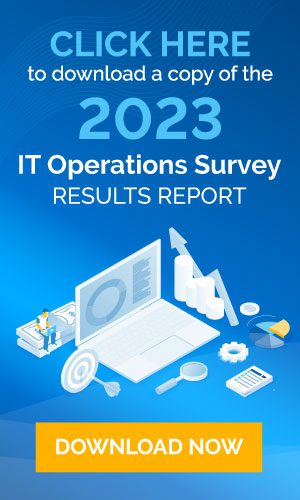The IT needs of businesses are constantly evolving in this digital world. In this challenging environment, having a reliable and secure IT infrastructure is essential for businesses to take care of their day-to-day functions and have a competitive advantage over other players in the market. The modern endpoint management solutions that businesses use must cater to their dynamic needs and help them keep up with technological changes.
When businesses grow, various components of their IT infrastructure including the number of endpoints is likely to grow alongside. Managing the growing number of endpoints while preventing downtime and cyber threats is a big challenge for internal IT teams as well as IT service providers.
Managed service providers (MSPs) who monitor and manage the IT infrastructure of their client businesses also need the right tools that make IT processes more efficient. With the right endpoint management solution, IT managers can automate routine IT tasks, get real-time visibility, and control their clients’ IT environments.
In this article, we’ll look at some of the must-have attributes of modern endpoint management tools and how businesses can make the most of these attributes.
Ease of Use
Ease of use is probably one of the most important aspects of a software application. Software design is always a constant battle between incorporating all the right functions and making the tool as easy-to-use as possible.
Since endpoint management is one of the core IT management functions, an endpoint management tool that is hard to use can be a nightmare for the entire IT team. Moreover, organizations run the risk of losing qualified IT technicians if they don’t invest in software tools that are intuitively easy to use. Modern-day IT environments are getting more complex day-by-day, and the last thing a technician needs is a tool that makes the job even harder.
Before you opt for an endpoint management solution, ask your vendor the following questions:
- Does the tool come with a modern user interface (UI) that provides a satisfying user experience (UX)?
- Is the tool easy to navigate and locate all the important functions?
- Does it minimize the number of mouse clicks needed to get the job done?
Usability goes beyond ease of use to also include user satisfaction.
With a modern endpoint management tool, you should be able to gain complete visibility into the IT infrastructure and efficiently perform the core IT management tasks from a single console. Most importantly, it should have a sleek UI that delivers a great UX.
Ease of Deployment
In addition to being easy-to-use, an endpoint management solution must be easy to deploy and flexible enough to configure to suit your specific IT needs. Several enterprise-class endpoint management tools on the market are notoriously difficult to configure and deploy in the customer’s environment. They typically require businesses to hire a team of consultants to help them through this process. Even then, there are no guarantees the system will work the way you expect it to. For small and medium-sized businesses that operate on a limited IT budget and have a small IT team, this is a serious concern.
Your vendor should help you with the installation process and ensure that the endpoint management solution is up and running in no time.
Reliable Patch Management
Patching systems in a timely manner is critical to keeping your IT environment secure from cyberattacks. However, patch management can be a labor-intensive process especially for organizations with limited IT staff. In a 2019 survey by Ponemon Institute, about 77 percent of respondents revealed that their companies did not have enough resources to keep up with the volume of patches.
The survey also found that 52 percent of organizations were at a disadvantage in responding to vulnerabilities because they use manual processes for patching and vulnerability management. Ineffective patch management tools and manual processes can derail timely patching.
Here are a few patch management capabilities to look for:
- Automated patch management from a single, centralized console
- Patching of both operating systems and third-party applications
- Automated, scheduled scanning of devices for missing patches
- Vulnerability management and reporting
- Patching of both on-network and off-network devices
- Patch compliance reporting to ensure adherence to company policies
Look Beyond Your Current IT Needs
The digital landscape is changing every day, and businesses are forced to come up with innovative solutions that meet their changing business needs. So, an important consideration when choosing an endpoint management solution is to look beyond your current IT needs. Protect your organization from being outdated in a fast-changing technology world.
In addition to the attributes mentioned in this article, a modern endpoint management tool must meet a number of other requirements, like robust remote management capabilities, policy based IT automation, and seamless workflow integrations with other key IT management tools.
To learn more about the top endpoint management requirements, download the eBook – Top 10 Requirements for Modern Endpoint Management Tools





